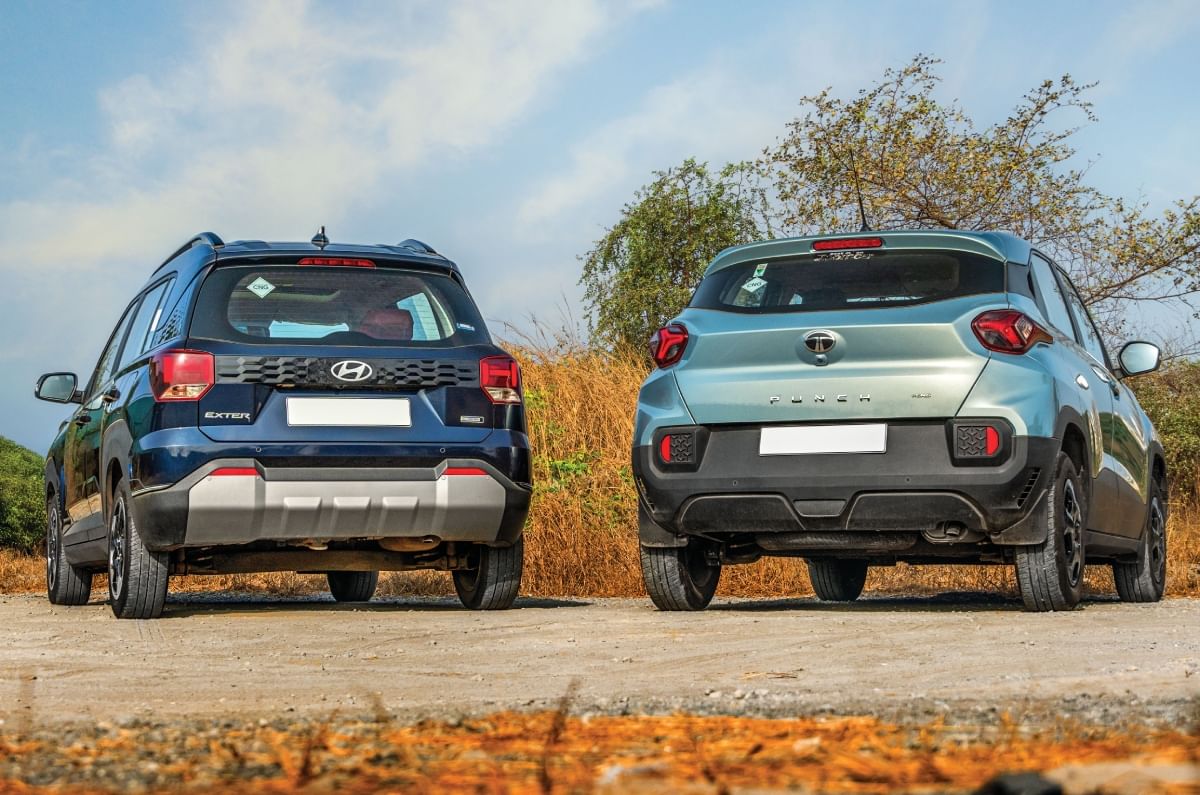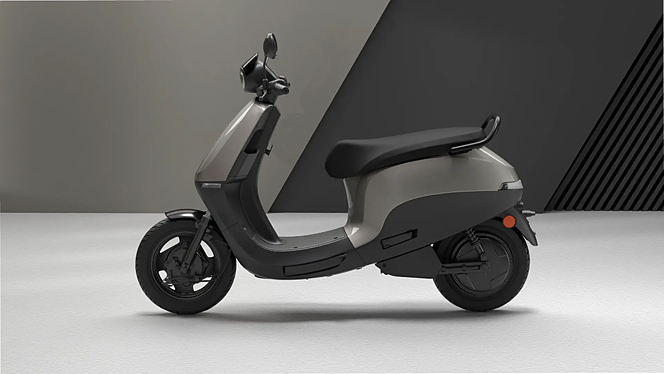
The Tata Punch CNG and Hyundai Exter CNG are the only subcompact SUVs equipped with factory-installed CNG systems and naturally compete against each other. Both vehicles are powered by a 1.2-litre engine, feature a dual-cylinder CNG kit, and come with a 5-speed manual transmission. Their price points are comparable, with the Punch iCNG Accomplished + S retailing for Rs 10 lakh and the Exter Hy-CNG Duo SX Tech priced at Rs 9.53 lakh. Despite the closeness of the ARAI-rated fuel efficiency figures, recorded at 26.99 km/kg for the Punch and 27.1 km/kg for the Exter, we delve into their real-world fuel economy.
- Punch CNG boasts a 74hp engine and weighs 1,181kg
- Exter CNG features a 69hp engine and weighs 1,093kg
- Real-world mileage results for both vehicles closely match the ARAI ratings
Hyundai Exter CNG vs Tata Punch CNG Real World Economy Results
Punch CNG Offers More Power, But Exter CNG Is Lighter
The Exter CNG is equipped with a 1.2-litre four-cylinder engine generating 69hp and 95Nm of torque when running on CNG, while also providing a standard 5-speed manual transmission. At a weight of 1,093kg, it is significantly lighter by 88kg compared to the Punch CNG, which weighs 1,181kg. In contrast, the Tata variant comes with a more robust engine — a 1.2-litre three-cylinder unit that produces 74hp and 103Nm of torque, and it similarly offers a standard 5-speed manual gearbox.
Exter CNG Achieves Higher Real World Average Fuel Efficiency Than Punch CNG

In urban fuel efficiency assessments, the Hyundai Exter recorded a commendable 22.8 km/kg, surpassing the Tata Punch’s 20.7 km/kg due to better driveability. However, on highways, the Exter’s engine operates at 3,300rpm while cruising at 100 kph, which results in the Punch CNG achieving a higher mileage of 31 km/kg compared to Exter’s 30.3 km/kg.
Averaging 26.55 km/kg in real-world conditions, the Exter CNG outperforms the Punch CNG, which stands at 25.85 km/kg, making the Hyundai the more efficient option among these CNG-powered subcompact SUVs. Notably, both models maintain real-world performance metrics closely aligned with their stated ARAI figures.
Autocar India’s Fuel Efficiency Testing Methodology
Filling CNG tanks presents unique challenges with several variables, including external temperature and pump pressure; thus, we avoided the conventional fill-up method. For a practical test, we depleted the CNG tanks and replenished each with 2 kilograms of CNG. We then drove them within city limits until the tanks were empty again. This same process was applied for highway testing, ensuring both vehicles operated solely in CNG mode during the assessment.
Tyre pressures were set according to the manufacturers’ specifications. The vehicles were tested on predefined urban and highway circuits in and around Navi Mumbai while maintaining specific average speeds. Each car had only one occupant who controlled the air conditioning and other electrical systems, such as the audio setup and indicators, as required—representing regular usage. Periodic driver changes helped eliminate biases in driving patterns, enhancing the reliability of our testing results, which aim to provide a true reflection of real-world expectations for users.





